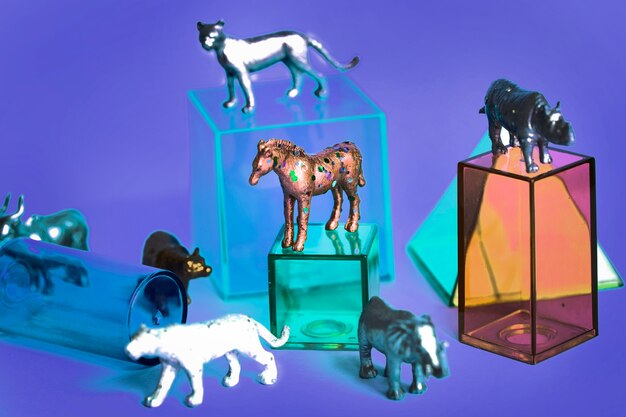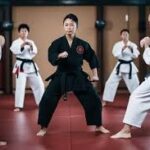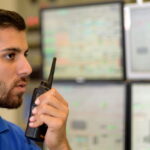The journey of visual arts has always been intertwined with technological advancements. From the invention of the camera obscura to the emergence of digital design software, technology has consistently shaped the tools and methods artists use to express their creativity. The advent of artificial intelligence (AI) has marked a transformative milestone, revolutionizing visual arts and digital illustration like never before.
Understanding AI in the Realm of Art
Artificial intelligence, at its core, refers to the simulation of human intelligence in machines. In the context of art, AI employs algorithms and machine learning to analyze patterns, interpret styles, and generate original works. Unlike traditional methods, where artists rely solely on their skill and imagination, AI acts as a collaborator, pushing creative boundaries.
How AI Creates Art
AI-driven platforms analyze massive datasets of artistic styles, historical art pieces, and contemporary designs. By identifying patterns, the algorithms learn to mimic styles or combine elements to produce something entirely novel. For instance, Generative Adversarial Networks (GANs) allow AI systems to generate unique images by pitting two neural networks against each other, resulting in outputs that can be both intricate and lifelike.
Transforming Digital Illustration
The field of digital illustration has witnessed an unparalleled evolution with AI tools. From speeding up workflows to enhancing creative possibilities, AI is reshaping how illustrators work.
Streamlining Workflows
AI-powered tools can automate repetitive tasks like coloring, shading, and background generation. Digital illustrators now spend less time on mundane tasks and more on conceptualizing and refining their creations. For example, platforms equipped with AI capabilities can analyze an artist’s sketch and suggest color palettes or add textures, significantly reducing production time.
Enhancing Creativity
Far from replacing human creativity, AI acts as a catalyst. It offers unexpected design suggestions, enabling artists to explore styles and ideas they might not have considered. For instance, AI algorithms can transform a simple sketch into a multi-layered, intricate piece, adding depth and complexity that elevate the artwork’s visual appeal.
The Democratization of Art Creation
One of the most significant impacts of AI on visual arts is its role in democratizing art creation. High-quality tools that were once accessible only to professionals are now available to hobbyists and aspiring artists.
Bridging the Skill Gap
AI tools simplify complex artistic techniques, making them accessible to users with minimal technical knowledge. Features like drag-and-drop interfaces, auto-suggestions, and preset filters empower individuals to create professional-grade art without years of training. This accessibility has spurred a new wave of creativity, where anyone can bring their visions to life.
Expanding Market Opportunities
With the rise of AI generated images, businesses and individuals can now access affordable, high-quality visuals for marketing, branding, and personal projects. This trend has created opportunities for freelance illustrators and digital artists to collaborate with AI, offering customized creations at scale.
AI in Collaborative Art Projects
AI has also paved the way for collaborative art projects, where human creativity and machine intelligence converge.
Co-Creation Platforms
Platforms like DeepArt and Runway enable artists to input their ideas and let AI refine or expand on them. These tools foster a symbiotic relationship, where the artist’s vision is amplified by the machine’s computational prowess.
Breaking Cultural Barriers
By analyzing art from diverse cultures, AI can generate works that blend styles and traditions, creating pieces that resonate with a global audience. This fusion enriches the art world and fosters cross-cultural appreciation and understanding.
Challenges and Ethical Considerations
While the impact of AI on visual arts is overwhelmingly positive, it does come with challenges and ethical dilemmas.
Intellectual Property Concerns
One major issue is the question of ownership. When AI creates art based on pre-existing works, who holds the copyright—the programmer, the artist whose work was used as inspiration, or the AI platform? Clear guidelines are necessary to address these ambiguities.
The Risk of Homogenization
There’s a risk that AI-generated art might lead to homogenized styles, as algorithms often rely on existing datasets to create new works. This could stifle innovation and reduce the uniqueness that defines art.
Job Displacement
While AI tools empower artists, they also raise concerns about job displacement. Automated systems capable of producing high-quality visuals might reduce the demand for human artists in certain industries. However, many argue that human creativity and emotional depth will always have a unique value.
The Future of AI in Visual Arts
The future of AI in visual arts is brimming with possibilities. As technology advances, so will the potential for innovation in art creation.
Interactive Experiences
The integration of AI into interactive mediums like augmented reality (AR) and virtual reality (VR) is set to revolutionize user experiences. Artists can create immersive environments where viewers can interact with and even influence the art, blurring the lines between creator and audience.
Personalized Creations
AI’s ability to analyze individual preferences will enable hyper-personalized art. From custom portraits to tailored illustrations, artists will be able to offer unique creations that resonate deeply with their audiences.
AI in Motion
Beyond static images, AI is making strides in animation and video production. The rise of the AI generated video app underscores the growing demand for automated video creation tools, which allow artists to create dynamic, high-quality animations efficiently. This trend is likely to continue, merging the worlds of digital illustration and motion graphics seamlessly.
Conclusion
From refining traditional methods to introducing groundbreaking possibilities, AI has undeniably reshaped the landscape of visual arts and digital illustration. It serves not only as a tool but also as a collaborator, enhancing creativity while democratizing art creation. As we navigate the complexities of this technological revolution, the fusion of human ingenuity and machine intelligence will undoubtedly lead to a new era of artistic expression, where pixels truly become masterpieces.







